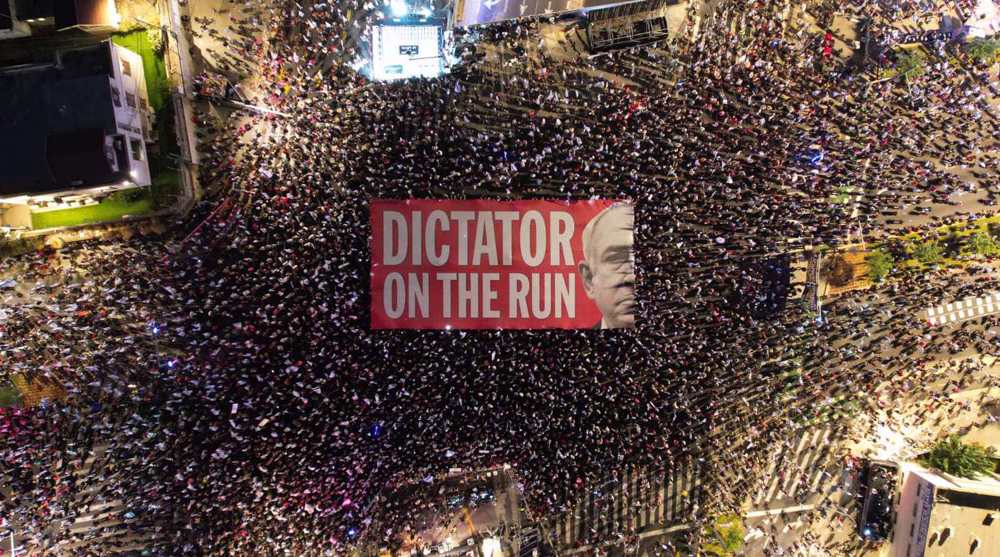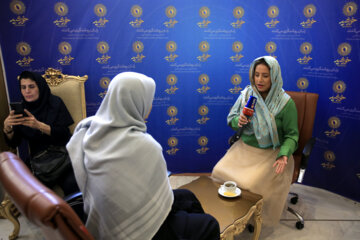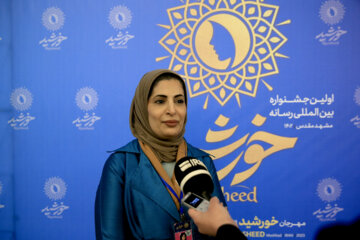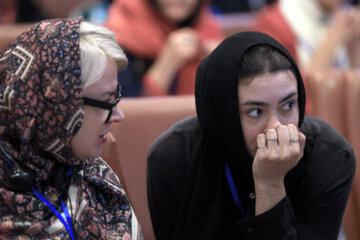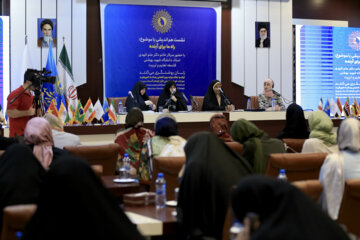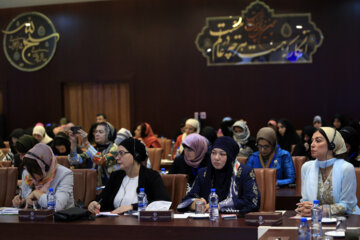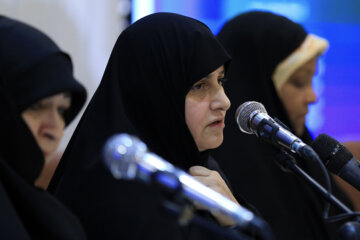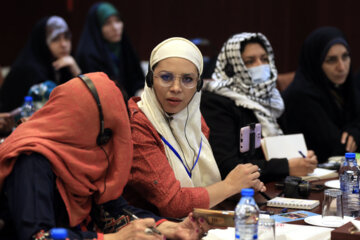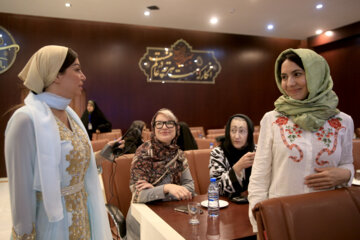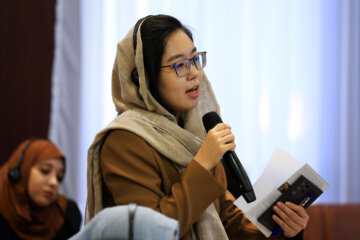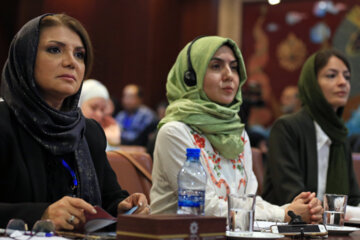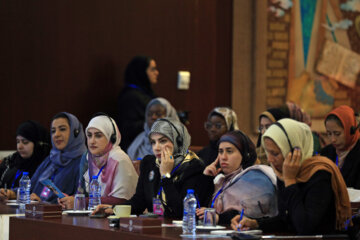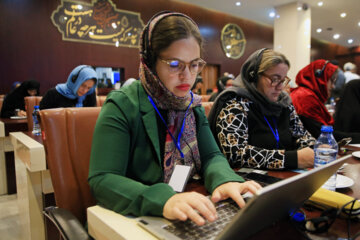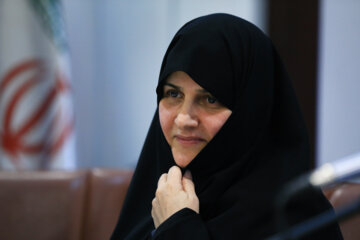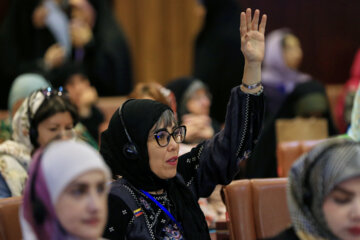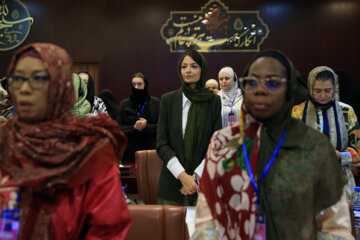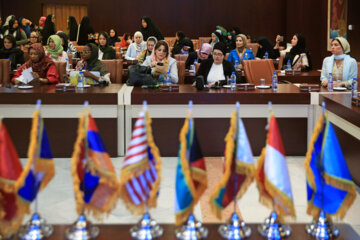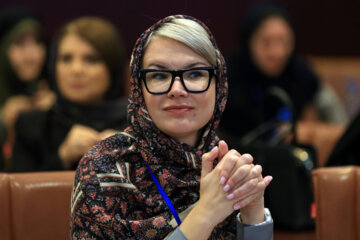The Cradle
After decades of setbacks, the upcoming integration of Iraq and Iran's railways promises to boost bilateral trade, religious and cultural tourism, and economic prosperity - with significant regional and global implications.
.jpg)
The news came a belated 46 years after it was first announced in 1978 - a year before Iran's Islamic Revolution took the world by storm.
In the aftermath of the revolution, and because of the outbreak of the subsequent Iran–Iraq War (1980-88), the railway initiative remained on hold for several decades. Although the project would have reaped significant benefits for both countries - spurring successive governments to pursue its completion - it is Iran's President Ebrahim Raisi and Iraq's Prime Minister Mohammed Shia al-Sudani who managed to strike the deal.
At the railway's inauguration ceremony, Sudani helped lay the project's foundation stone alongside Iranian First Vice President Mohammad Mokhber, who said the completion of the project would significantly boost trade exchanges between the two countries by connecting their respective railway systems and aligning these with international transport routes.
Tourism and trade relations
Upon its completion in two years, the Shalamcheh-Basra Railway will span 32 kilometers, include three stations, and a bridge connecting Iran with Iraq across the Shatt al-Arab - all constructed with Iran's support.
Maytham al-Safi, information director at Iraq's Ministry of Transport, tells The Cradle that "the railway line will eventually link to the Iraqi cities of Najaf and Karbala" in order to facilitate the transportation of pilgrims visiting shrine cities to and from Iraq.
Iraq and Iran share a border that stretches approximately 1600 kilometers, as well as numerous religious, cultural, and tourism similarities. Each year, around 3 million Iranians make pilgrimages to the Shia holy shrines in Iraq, while 2 to 3 million Iraqis visit Iran, home to the Imam Reza shrine in Mashhad and the influential Qom seminary.
In 2018, about 24 percent of all tourists visiting Iran came from Iraq, the largest of any country. Iran also boasts a significant health tourism industry - ranking 46th globally - and Iraqis constitute the second-largest group of health tourists to Iran after Afghanistan.
Despite these significant cultural ties, the volume of trade between the two countries has remained dismal. Even in the most optimistic scenario, Tehran and Baghdad have achieved only 50 percent of their targeted $20 billion in trade.
Several factors have contributed to this: a decline in electricity trade; reductions in gasoline and diesel exports; competition from Iran's commercial rivals like China, India, the US, Turkiye, and the UAE; excessive commercial bureaucracy between the two states; and a lack of efficient and rapid transit capabilities to Iraq.
Iran-Iraq trade decline
According to the latest statistics, non-oil trade between Iraq and Iran reached $8.9 billion in 2021, but over the past two years, Iran's exports to Iraq have declined in 20 different categories. Farzad Pilten, head of the West Asia office of the Iran Trade Development Organization, noted a 60 percent decrease in gas exports and an 80 percent decrease in gasoline exports to Iraq.
Iran's performance has lagged behind other exporters, slipping to fourth place in exports to Iraq after the UAE, Turkiye, and China.
The decrease in exports between Iran and Iraq can be attributed to various factors, notably the insufficient transportation infrastructure connecting the two countries. Much of this trade relies on a very inefficient transportation of goods by road. As Javad Hedayati, director general of Iran's International Transit and Transport, explains, Iranian trucks transport goods to the shared border, where they are laboriously unloaded and handed over to Iraqi trucks:
"In this mode of interaction, trucks carrying cargo due to congestion sometimes have to wait for more than four days at the borders to receive their turn and unload their cargo, while the cost of stopping them at the border is more than $200 per day."
The completion of the Shalamcheh-Basra Railway project promises to significantly boost trade by reducing transit costs by up to 20 percent, and help Iraq offset its staggering trade imbalance. In 2018, Iran exported approximately $9 billion worth of goods to Iraq, while Iraq's exports to Iran amounted to a mere $58 million.
Iran's transit hub ambition
Iran's strategic goal of becoming a key regional transit hub is closely tied to its ideal geographical location at the crossroads of Asia and Europe. Recognizing this geopolitical opportunity, the Raisi administration - which has heavily prioritized the "Looking to the East" and "Neighborhood" policies - has embarked on ambitious plans to harness this potential.
Iran already has a domestic railway network that spans 14,300 kilometers, with plans to add an additional 10,000 kilometers via 36 ongoing rail projects. Impressively, the country has established seven cross-border connections to neighboring railway networks and achieved self-sufficiency in engineering services, railway construction, and rail production - even exporting domestically-produced railroad cars and train engines.
Iran is currently strategically positioned along two international railway routes: the East-West and International North-South Transport Corridors (INSTC). The east-west route connects ASEAN countries and China to European markets, while the INSTC transit route links Russia to India via Iran.
The Shalamcheh-Basra rail project particularly complements the East-West railway connection. Via Iraq, Iran will be able to connect to the Syrian port of Latakia and its transit capacities, which might be vital to Europe.
The Iran-Iran railway also opens up the possibility of connecting with other Persian Gulf states like Saudi Arabia and Kuwait. There are reports that Saudi Arabia is exploring the idea of linking railroads to Iran through Kuwait and Basra, which would create a direct rail connection between Iran and the Gulf Cooperation Council (GCC) countries.
Iraq's role in global transport
Iraq, on the other hand, stands to benefit from improved access to markets in Central Asian countries, Afghanistan, and Azerbaijan via its rail link to Iran. A southern Iraqi railway which already transports more than 6 million tons of cargo, could boost the exchange of goods to over 20 million tons upon completion of the Iran-Iraq rail connection.
Furthermore, Shia pilgrims from Azerbaijan would have easier access to the holy city of Karbala via this railway, generating transit and tourism income for Iraq. Hafez Sadatnejad, manager of the Shalamcheh-Basra railway project, adds that the rail link with allow for the transportation of 4 million pilgrims to the pilgrimage cities of Mashhad, Qom, and Karbala in both countries.
By integrating this railway with Iran's considerable capacities in the Khorramshahr and Imam Khomeini ports, cargo from different countries can be efficiently transported to the country's southern waters. Iran's extensive port infrastructure plays a crucial role in its foreign trade, with a target of achieving a cargo handling capacity of 500 million tons within the next five years.
For Iraq, the railway link with Iran is part of a broader and more ambitious project that extends from China to Europe. As economist Maitham al-Amili explains to The Cradle:
“Despite what is said that the goal of the project is to facilitate the transportation of travelers between Iraq and Iran, it is part of a larger project that will contribute to diversifying Iraq's financial resources by making it a transit corridor for millions of tons of goods if completed.”
On 20 August, the Iraqi Ministry of Transport announced an agreement with Turkiye to link Iraqi railways to Turkish railways via a 133-kilometre line, with the aim of linking the grand port of Al-Faw to Europe, all within what is known as the “Development Road.”
Amili believes that Iraq has a role in the new global transportation project that “extends from China through Iraq to Syria, by land and sea through the port of Al-Faw.”
A hard American veto
Iraq's geostrategic location as a bridge between West Asia and Europe favors its position as “a major complement to the global transportation map linking Asian countries to the European Union,” says economist Nabil al-Marsoumi:
“Rail transport is the safest means of transport, in addition to being inexpensive, and it always brings economic prosperity to the countries that rely on it, as in China and other countries…the multiplicity of ports to Iraq will enhance the opportunities to encourage its industries and increase its exports, not only oil, but also in the agricultural, petrochemical, and other sectors."
Mazen al-Ashaiqer, also an economist, warns that “Iraq needs to diversify its transport lines with neighboring countries, especially for passengers, with the increasing tourist traffic to and from the country, with added economic importance if a rail or sea connection with China is achieved, making it a corridor towards Europe.”
These ambitions come with notable challenges and geopolitical complexities. Political analyst Mahmoud al-Hashemi says that “there are major American obstacles that Iraq’s plans for sea and land connectivity with Iran and China will face.”
“The US is well aware of the positive impact of these projects on Iraq, but it wants this country to be part of its conflict with China, Iran, and Russia.”
A senior government source reveals to The Cradle that “there has been an international conflict going on for more than ten years to control international transport lines, at the center of which are Iraq and Syria, and its main poles are China, Russia, Iran, and the United States.”
He says that a transportation project is being sought by some countries to link China with Iraq and Iran, all the way to the port of Latakia on the Mediterranean Sea, to shorten the sea transport route via the Red Sea or the Atlantic Ocean to Europe, “But we cannot say that the Basra-Shalamcheh railway line is part of this project.”
The same source attributes the mobilization of US forces along the Iraqi-Syrian border and the arming of local tribes to “Washington’s attempts to block the railway project from Basra to the port of Latakia via the Syrian cities of Albukamal and Deir ez-Zor.”
This is in addition to the express land line that will connect Iran to Syria via Al-Qaim border crossing, as it will constitute a new victory in the soft economic war ongoing between China and Russia on the one hand and the US on the other hand.
Shalamcheh-Basra Railway and the region
The influence of US propaganda on shaping public opinion in Iraq regarding economic and security cooperation with Iran is a notable concern. Speaking to The Cradle, Iraqi journalist Hassan al-Shammari points out that both “local and international media are subject to an American media machine to direct public opinion in accordance with its policies.”
According to Shammari, “any observer of the Iraqi media will notice that they welcome, or at least turn a blind eye to, any projects between Iraq and Saudi Arabia, Jordan or Turkiye, for example, while an organized media attack is launched against any similar project with Iran.” He adds:
“This is what accompanied the announcement of the railway connection project with Iran, while there is no criticism of the railway connection with Turkiye within the development road project, or of the railway connection with Saudi Arabia.”
Opponents of the railway connection with Iran often express concerns about its potential impact on the grand port of Al-Faw. Former Basra governor Wael Abdul Latif and former Minister of Transport Amer Abdul-Jabbar have warned that the railway may divert shipping traffic to Iranian ports, leading to increased prices and a reduction in port efficiency.
However, as Iraqi government spokesman Bassem al-Awadi confirmed in a recent press conference:
“The government laid the foundation stone for the project after an economic feasibility study, ensuring Iraq’s economic and political security, and not compromising the country’s sovereignty and economy.”
As the Shalamcheh-Basra Railway project advances, it serves as a poignant symbol of progress toward enhanced shared prosperity for, and a new level of connectivity between, Iraq and Iran.
This often-overlooked region within West Asia is poised to leave an indelible mark on global trade and transportation in the years ahead, contributing to broader regional integration and ushering in a new era of economic and logistical cooperation.




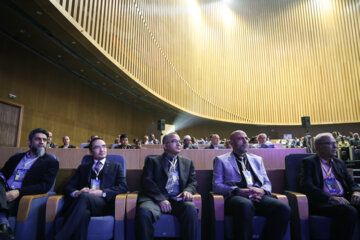
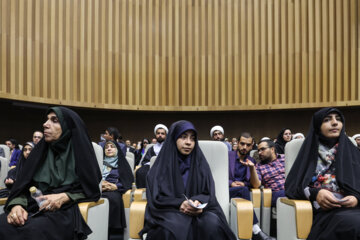




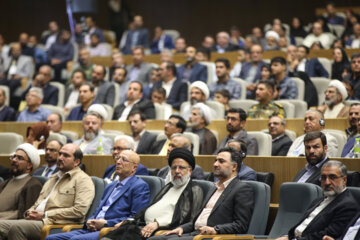
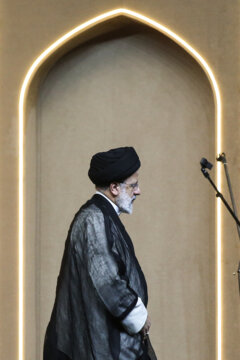
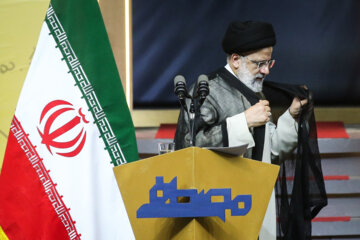
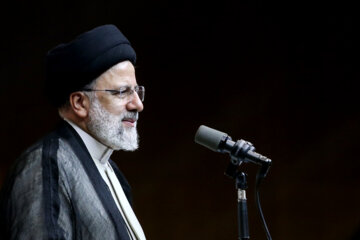
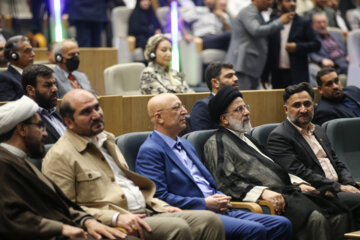
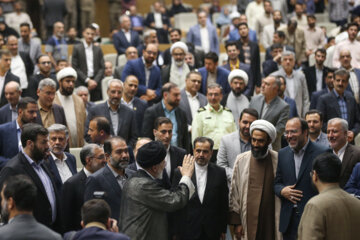
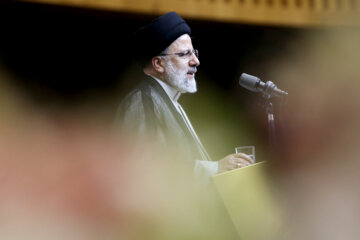

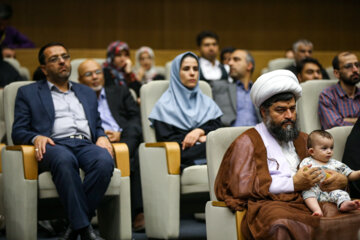


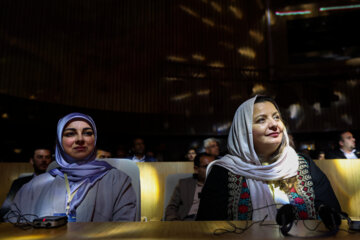


.jpg)
.jpg)
